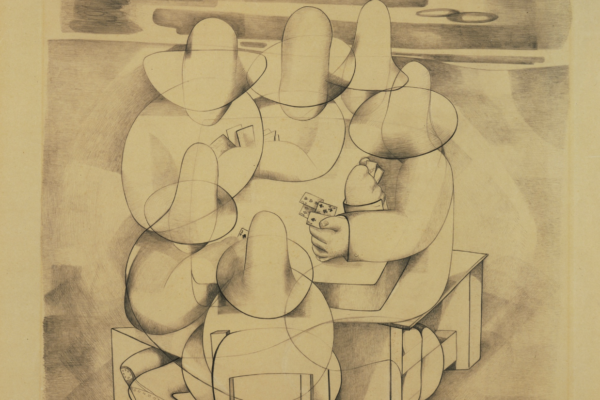
Take a minute to try without Googling! During National Women’s History Month, the National Museum of Women in Arts challenged everyone through a social media campaign to give this a try. What should have been an easy task, was not. When you alter the question to be “Can you name 5 women of color painters?” That challenge becomes even more difficult.
Our next show FAKE centers around the work of Cuban artist, Amelia Peláez (1896-1968)—also, the great aunt of the playwright Carmen Peláez. She remains one of the most significant “undiscovered” artists of the 20th century. After training in Paris and a successful show at the Galerie Zak, located on the Rue de l’Abbaye in Paris in 1933, she returned to Cuba and made limited efforts to be part of the mainstream art world of New York and Paris allowing the world to come to her if she wished. She became a member of the Cuban avant-garde movement, the vanguardia that helped to promote nationalism by using art to explore and define Cuban culture as its own entity. Her perspective as a woman gave her a special place in the world of the vanguardia because she was able to look at Cuban life and tradition from a different perspective. She existed much more privately than her fellow vanguardia painters, and was only one of a few women to participate in the movement of Latin American art.

She was a “liberated” woman far ahead of her time and a pioneering Cuban modernist whose example was important both for her contemporaries and for younger artists. A difficulty she faced was the acceptance of modern art at the time. It was a growing practice but many people did not accept the stylistic approach. Although “Amelias” can now be sold for thousands of dollars, it was extremely hard for her to make a living as an artist. Her first exhibition in Cuba after returning from Paris sold no paintings, and she spent a lot of time teaching art locally to supplement her occasional income from sold works. In 1941 Amelia’s work was shown for the first time in New York for the magazine Norte, and this led to multiple purchases of her art by the Museum of Modern Art in the following years. The 1940s finally put Cuban modernists on the map with a traveling Modern Cuban Art exhibition that visited the U.S, Europe, and Latin America.
Did you know facts about female artists?
- Only 30% of artists represented by commercial galleries are women. In Australia, it’s about 40%; in Germany, less than 20%.
- Of 590 major exhibitions by nearly 70 institutions in the U.S. from 2007–2013, only 27% were devoted to women artists.
- From the 16–19th centuries, women were barred from studying the nude model, which formed the basis for academic training and representation
- Only five women made the list of the top 100 artists by cumulative auction value between 2011-2016
- There are no women in the top 0.03% of the auction market, where 41% of the profit is concentrated. Overall, 96.1% of artworks sold at auction are by male artists.
SOURCES:
-
http://ameliapelaez.org/ameliapelaez.org/AMELIA.html
-
https://sophia.smith.edu/global-modern-women-artists/amelia-palaez/biography/
-
https://www.thoughtco.com/can-you-name-five-women-artists-3968269
-
https://nmwa.org/advocate/get-facts



